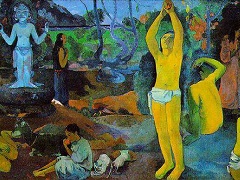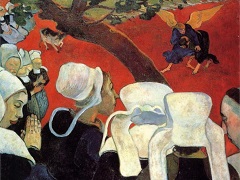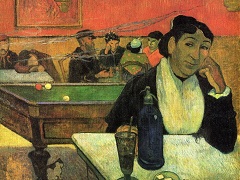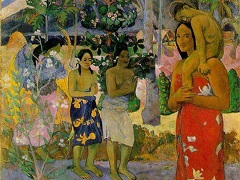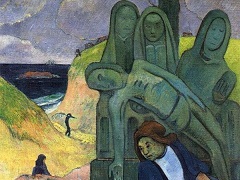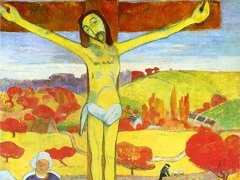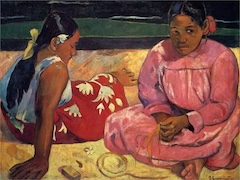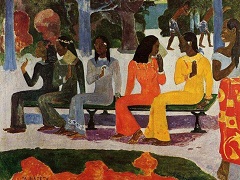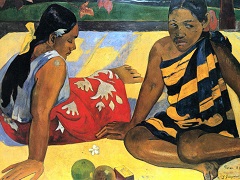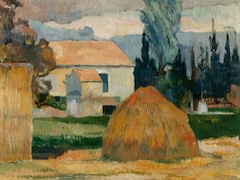The Day of the God, 1894 by Paul Gauguin
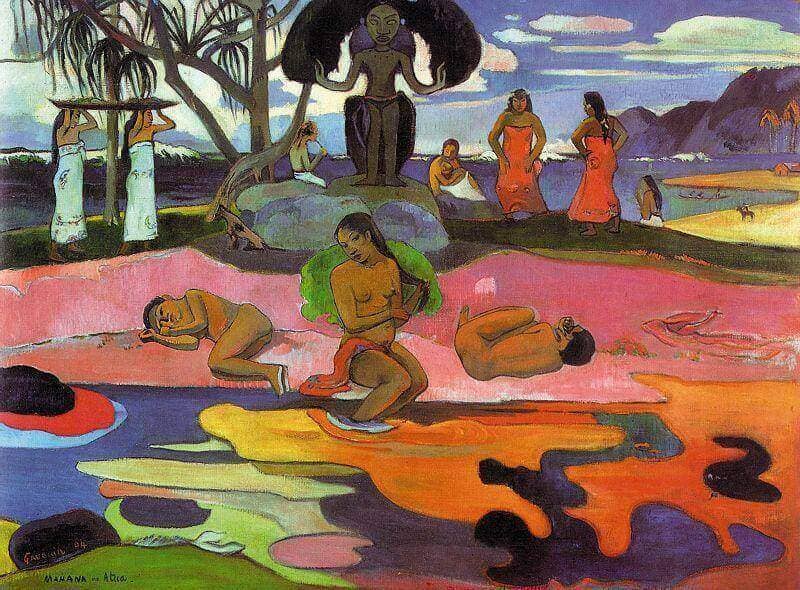
This picture derives its theme from Gauguin's study and imaginative interpretation of Polynesian mythology. The main figure is Taaroa, central figure of the Maori pantheon, the creator of the world about whom the artist writes in his Ancien Culte Mahorie. In his honor gifts are being brought by two maidens on the left, while on the right two girls perform a ritual dance.
Gauguin's sources and his inventiveness are both clearly evident. The repetitive profiles of the white-clad girls stem from Egypt; the dancers from his observation of the life around him, stylized to make a pendant group; and the god from his hieratic distillation of the myths he had read about. The three naked figures in the foreground seem to suggest creation, their languid poses (and especially the embryo curl of the figure on the right) related to the overpowering energy of the god behind them.
The curves of their figures, and of the god's feather headdress are echoed in the foreground. The water is filled with curious amoeba-like shapes, which, perhaps rocks, perhaps shadows (but from where?), are above all simply decorative forms designed to give the composition its mood and rhythm, and picked up again in the arbitrary cloud shapes of the background. We recognize here the synthetist simplifications of the Brittany pictures of 1888 and 1889. Now however, Gauguin has stylized them to the point of almost complete abstraction. Historically, they point forward, not back, and our first thought is no longer of leaded windows, source of Bernard's cloisonnisme but of post-Cubist, organic abstraction.

